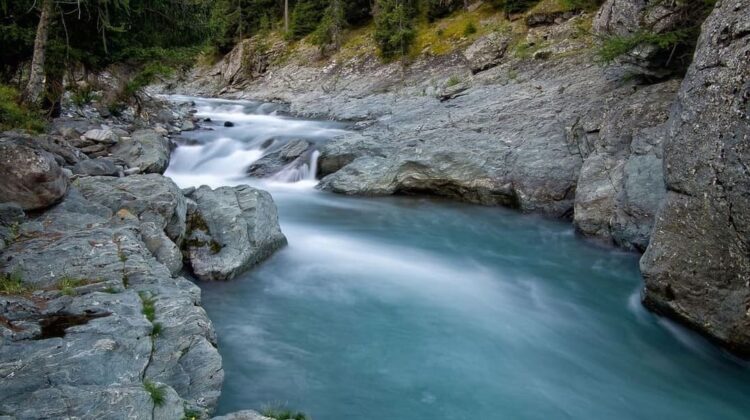
The Synergy of Waterways and Geology: Sculpting the Earth’s Surface
The intricate dance between waterways and geological phenomena has profoundly moulded the Earth’s exterior for eons. Rivers, lakes, and oceans, intertwined with the substrata of geology, do not merely etch the terrain; they sustain ecosystems, bolster civilisations, and furnish essential resources. This discourse delves into the dynamic interplay of waterways and geological processes, unearthing the profound ways they shape our planet.
The Potency of Waterways in Geological Transformation
Waterways are formidable agents of terrestrial metamorphosis. Whether through the unhurried wearing down of ancient bedrock or the precipitous sculpting of awe-inspiring canyons, their geological fingerprints are unmistakable:
- Erosion: Streams and rivers relentlessly wear down landscapes, ferrying sediments to far-flung locales.
- Deposition: The suspended particles find repose in fertile floodplains, tranquil valleys, or sprawling deltas.
- Landform Evolution: These aqueous pathways forge striking features, from serpentine meanders to dramatic gorges and secluded oxbow lakes.
Geological Processes Moulded by Waterways
- Erosion and Weathering
Flowing water accelerates both mechanical and chemical weathering, chiselling rocks into striking formations. Over millennia, persistent currents can breach even the sturdiest stone, unveiling masterpieces like:
The Grand Canyon, a testament to the Colorado River’s perseverance.
Coastal cliffs, perpetually reshaped by the relentless pounding of waves.
- Sediment Mobility and Accumulation
Rivers act as nature’s conveyor belts, carrying a spectrum of sediment from microscopic silt to colossal boulders. When currents wane, these materials settle, sculpting:
- Alluvial Plains: Fertile expanses born of sediment layering.
- Deltas: Iconic fan-shaped landscapes, epitomised by the Nile Delta.
- Subterranean Waterways and Karst Phenomena
Below the surface, aquifers exert their influence, shaping the geological underworld. Water seeping through fissures dissolves minerals, giving rise to:
Cave Systems: Complex labyrinths, often formed in limestone terrains.
Sinkholes: Abrupt ground collapses triggered by subterranean erosion.
The Interplay Between Waterways and Tectonics
The confluence of waterways and tectonic movements is profound. Fault lines frequently guide rivers and lakes, forging pathways through fractured rock. Notable instances include:
- The San Andreas Fault, shadowed by an array of waterways.
- Rift valleys, such as the East African Rift, where tectonic upheavals have birthed sprawling lake systems.
Geology’s Hand in Directing Waterways
Conversely, the bedrock beneath dictates how waterways meander and flow. Several factors govern this:
- Rock Composition: Hard substrates like granite resist wear, whereas softer stones like limestone readily succumb.
- Topography: Steep gradients foster swift rivers, while flatter terrains encourage languid meanders.
- Soil Porosity: Determines the balance between groundwater infiltration and surface runoff.
Ecological and Anthropogenic Implications
- Biodiversity and Habitats
The union of waterways and geology nurtures diverse ecosystems. Wetlands, riparian zones, and deltas teem with life, hosting myriad flora and fauna. - The Bedrock of Civilisation
Humanity has thrived along waterways since antiquity. From Mesopotamia to the Nile Valley, these liquid lifelines have supported agriculture, commerce, and settlement.
Modern Challenges: Waterways and Geology Under Duress
The delicate equilibrium between these forces faces unprecedented threats, primarily from human activity and climate upheaval:
- Pollution: Industrial and agricultural effluents poison waterways, destabilising geological and ecological systems.
- Deforestation and Erosion: Unsustainable practices amplify soil degradation and sediment imbalance.
- Climate Change: Altered precipitation and rising seas disrupt natural waterway patterns.
Preserving the Waterway-Geology Nexus
To safeguard this fragile relationship, proactive conservation is paramount:
- Sustainable Land Stewardship: Protecting forests and wetlands to curb erosion.
- Restorative Practices: Reviving rivers and deltas to reinstate natural sediment flows.
- Climate Adaptation: Developing infrastructure resilient to evolving hydrological dynamics.
Waterways and geology, inextricably linked, are architects of the Earth’s ever-changing visage. Deepening our understanding of their symbiosis is not merely academic; it is essential for nurturing our planet’s natural heritage and fostering sustainable development.
Author: Levi Burrell
Science divulgator. He writes for numerous popular science magazines. Collaborates with the Deeping in the area of science dissemination
